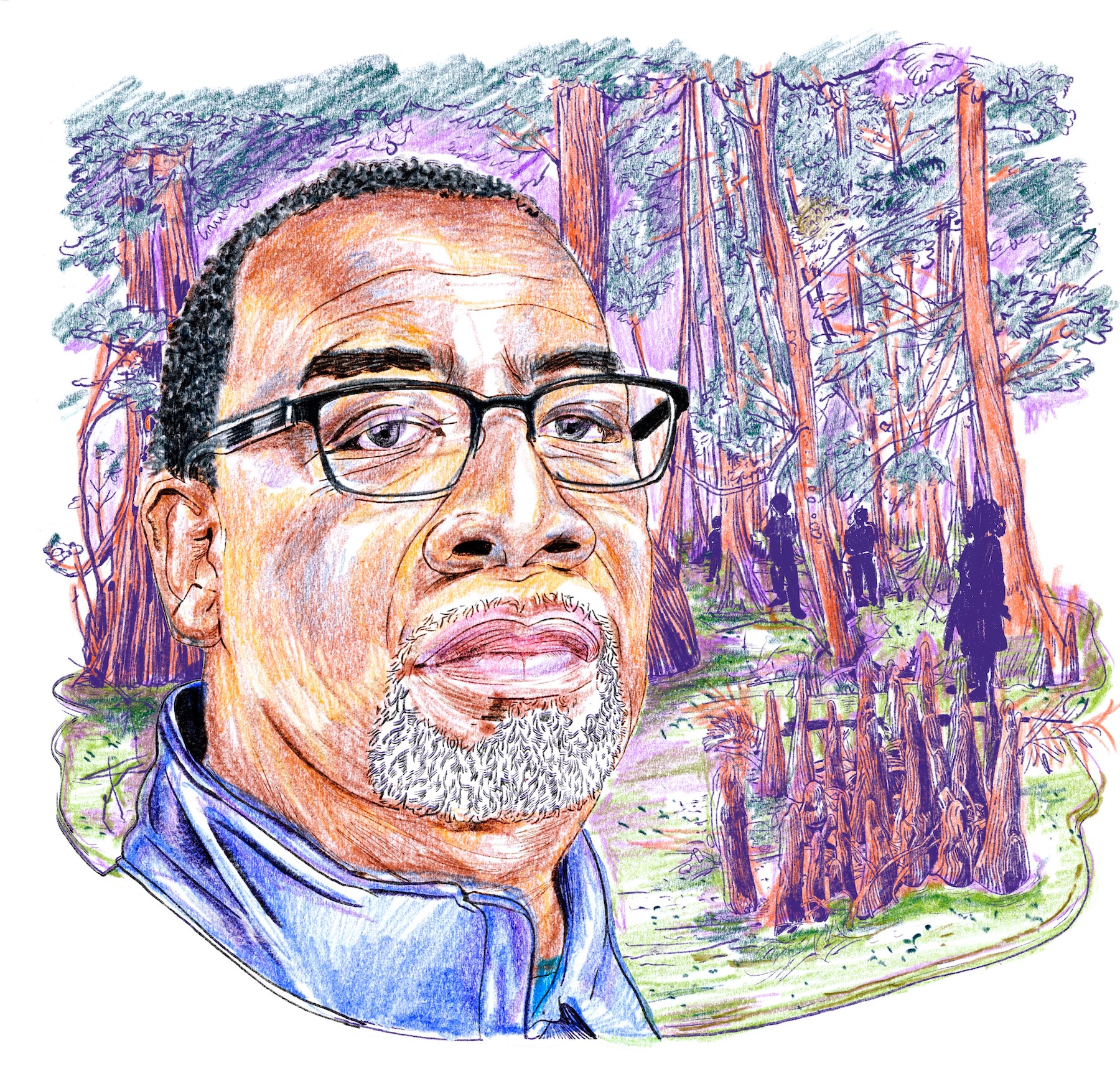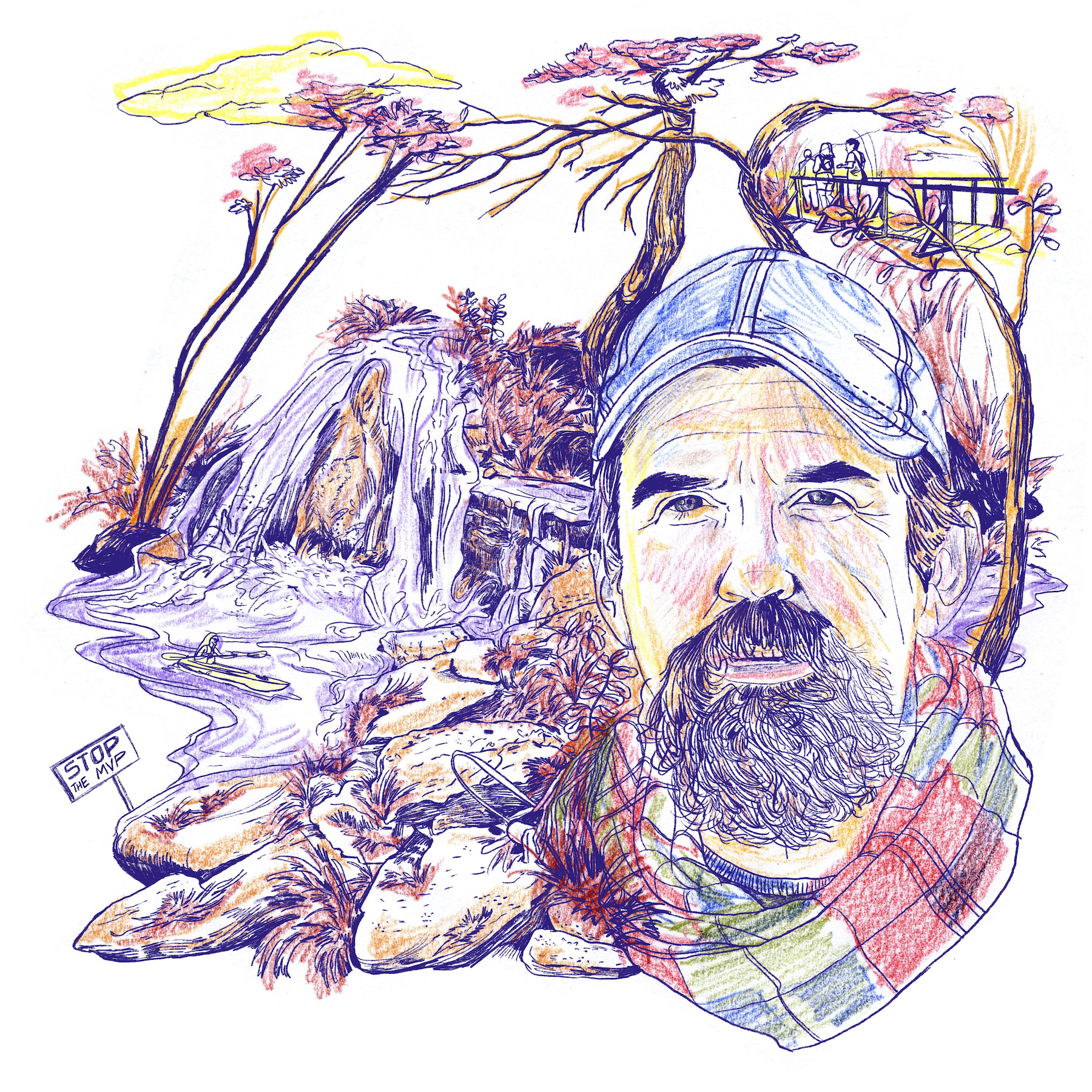Voices of the East
Sanika Phadwe
A Storytelling Anthology
The eastern United States spans 2,500 miles from Florida to Maine and houses the ancient Appalachian Mountain range, rich in biodiversity and a hub for movement, adaptation and resilience. It’s also home to some of the most beloved public lands in the nation. In celebration of Public Lands Day, we’re featuring five personal audio stories from individuals who call the east ‘home,’ exploring their ties to land, history, identity, and more.
Illustrations by Sanika Phawde
Stories Produced by Martin Froger Silva
- Pete McKinley, a conservation biologist living in Maine
- Ambreen Tariq, a creator and author living in a suburb of Washington, DC
- Eric ‘Mubita’ Sheppard, a genealogy researcher and entrepreneur living in Virginia
- Chief Anne Richardson, chief of the Rappahannock Tribe, living on the ancestral lands of the Rappahannock
- Russell Chisholm, an activist and organizer living in Virginia
We recognize Native American and Indigenous peoples as the longest-serving stewards of the land. We respect their inherent sovereignty and self-determination and honor treaty rights, including reserved rights that exist off their reservations. We acknowledge the historic and ongoing injustices perpetrated against Indigenous peoples and are committed to being more conscientious and inclusive and working with Indigenous peoples to advance the establishment of trust and respect in our relationships.
We seek the guidance of Native American and Indigenous peoples to effectively advocate for the protection of culturally significant lands and the preservation of language and culture. We strive to support actions that respect the priorities, traditional knowledge, interests, and concerns of Native American and Indigenous peoples to ensure a more just and equitable future.
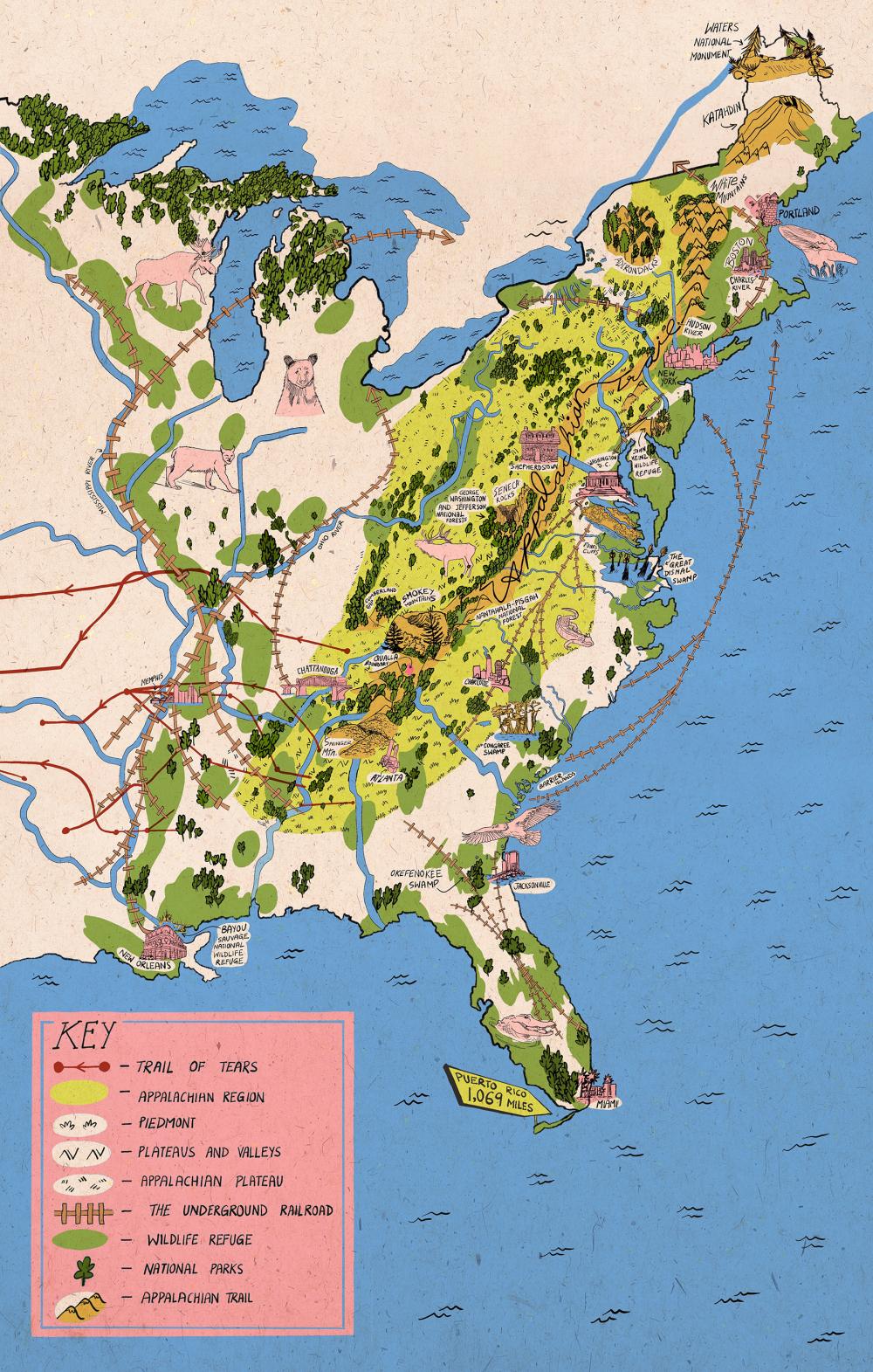
Sanika Phadwe
Click here to view the map at full size
The eastern region of what is now known as the United States stretches eastward from the Mississippi River and 2,500 miles from Florida to Maine. This diverse landscape, known at The Wilderness Society as “the East,” is also home to the greater Appalachian Mountain range and boasts the largest amount of plant and animal diversity in the country. In addition to being a global biodiversity hotspot, the East represents a spine of uninterrupted connected movement, adaptation and long-term residence for people and wildlife alike. From majestic forests, lush piedmont regions, pristine waterways and everything in between - it’s no wonder that this landscape includes some of the most frequently visited and well-loved public lands in the country.
Today, nearly 50 percent of the U.S. population lives within this region, making this landscape significant for many cultures and for connecting people to nature throughout history. In addition to a rich Indigenous history, Eastern landscapes hold a central place in Black American histories and presence in the United States.
This project captures the stories of five individuals who live, work and play in these lands, revealing what makes their chosen home special through the timeless tradition of oral storytelling. Listen to their own words as they reflect on public lands, history, identity and more.
Pete McKinley, The Wilderness Society
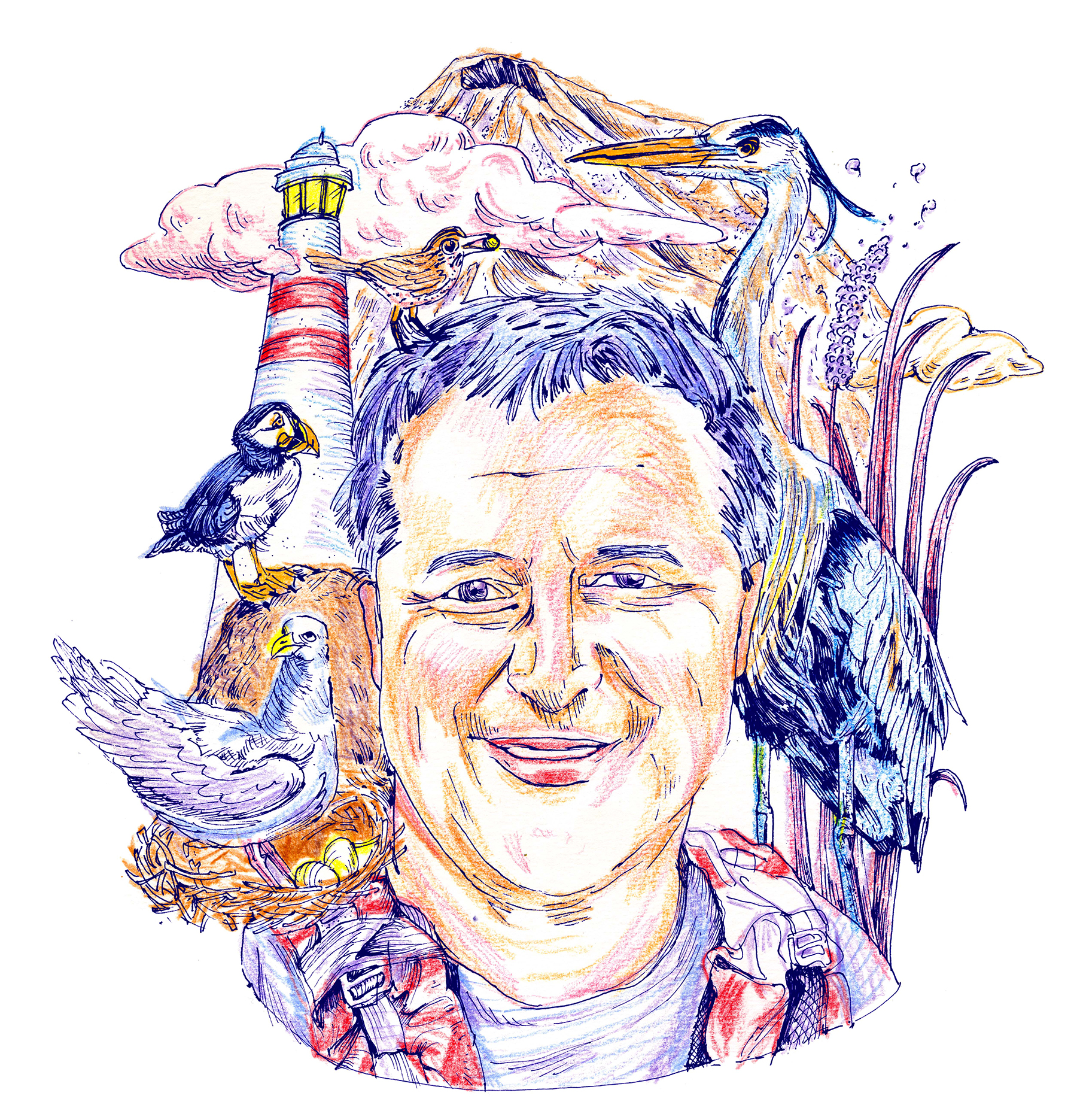 Pete McKinley (he/him) joined The Wilderness Society in 2010, having worked in northeastern conservation and ecological research for the last 20 years. Prior to joining the Wilderness Society, Pete served for three years as the Director of Forestland Conservation at the Forest Society of Maine, a statewide land trust. Pete’s weekend hikes and paddles with family and friends span interior and coastal New England, enjoying the physical challenges, poetic moments and biodiversity of mountains and sea.
Pete McKinley (he/him) joined The Wilderness Society in 2010, having worked in northeastern conservation and ecological research for the last 20 years. Prior to joining the Wilderness Society, Pete served for three years as the Director of Forestland Conservation at the Forest Society of Maine, a statewide land trust. Pete’s weekend hikes and paddles with family and friends span interior and coastal New England, enjoying the physical challenges, poetic moments and biodiversity of mountains and sea.
Ambreen Tariq, Brown People Camping
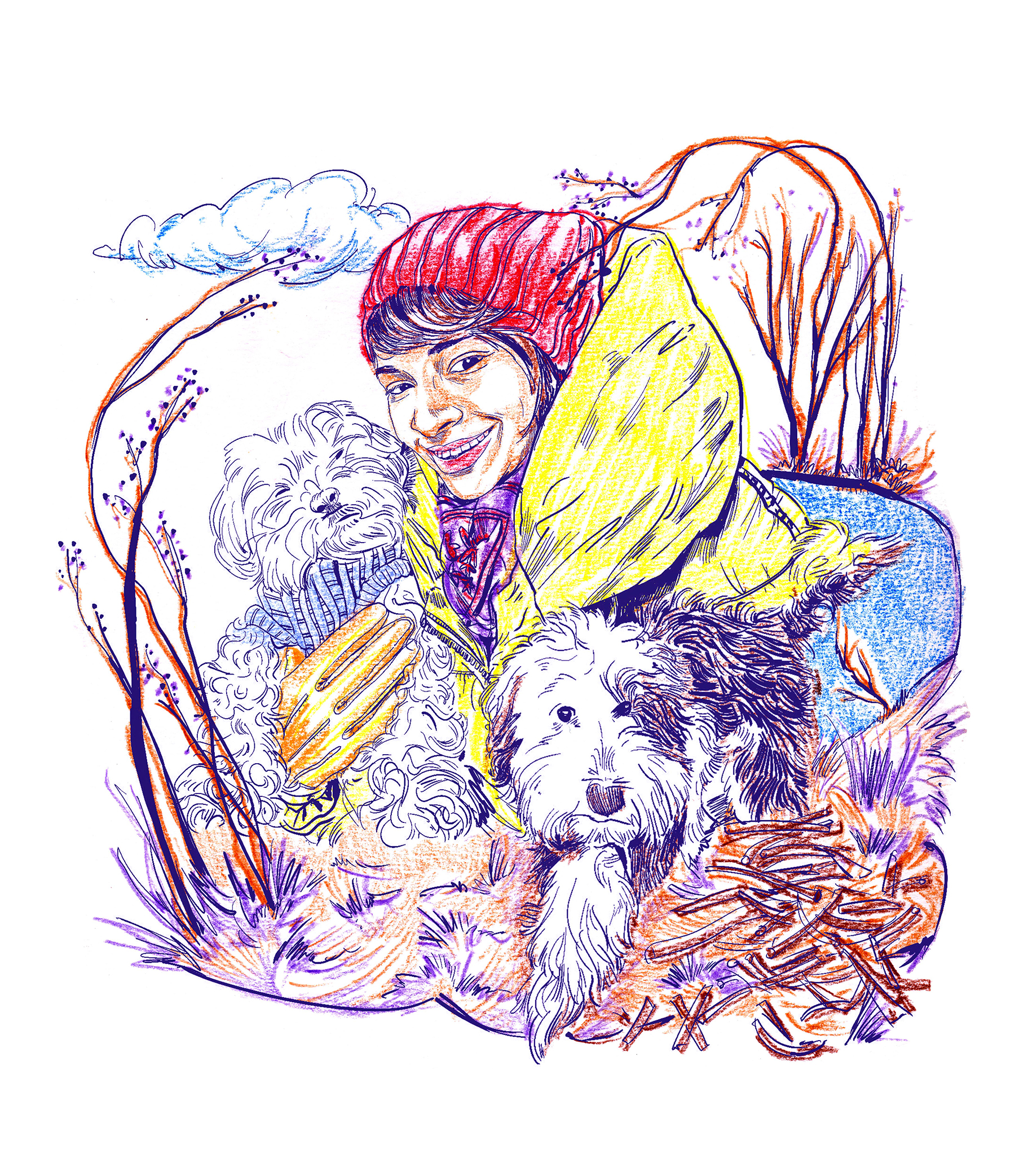 Ambreen Tariq (she/her) is the founder of @BrownPeopleCamping, a social media platform dedicated to promoting greater diversity in our public lands through storytelling and the power of visual representation. As an activist, Ambreen uses storytelling to share how her life experiences as a Muslim, South-Asian American immigrant woman have shaped her love for the outdoors and to promote for everyone to enjoy the outdoors in their own authentic ways.
Ambreen Tariq (she/her) is the founder of @BrownPeopleCamping, a social media platform dedicated to promoting greater diversity in our public lands through storytelling and the power of visual representation. As an activist, Ambreen uses storytelling to share how her life experiences as a Muslim, South-Asian American immigrant woman have shaped her love for the outdoors and to promote for everyone to enjoy the outdoors in their own authentic ways.
Eric ‘Mubita’ Sheppard, Mubita LLC
Eric 'Mubita' Sheppard (he/him) is President, Founder and Visionary of Mubita LLC, which helps descendants of the enslaved in America restore relationships that were separated by the institutions of enslavement in the United States and Africa. Eric started family genealogy research in 1996, and discovered the 1843 slave narrative of his ancestor, Moses Grandy, in 2001. Eric's genealogy research has led to his passion for reconnecting with his ancestral roots in Africa, where he developed his company's business concept of “Acknowledge Our Past and Embrace Our Future” to enhance United States and Africa cultural exchanges and explore mutually beneficial trade opportunities.
Chief Anne Richardson, Rappahannock Tribe
Chief Anne Richardson (she/her) has served as Chief of the Rappahannock Tribe since 1998, the first woman Chief to lead a Tribe in Virginia since the 1700s. As a fourth-generation chief in her family, she brings to her position a long legacy of community leadership and service among her people. The mission of the Tribe is to preserve Rappahannock culture, social structures, and political structures while educating the public on the rich contributions that Rappahannocks have made and continue to make to Virginia and the Nation.
Russell Chisholm, Protect Our Water, Heritage, Rights (POWHR)
Russell Chisholm (he/him) serves as Managing Director of the Protect Our Water, Heritage Rights (POWHR) coalition. POWHR is a grassroots coalition representing individuals and groups from Virginia and West Virginia dedicated to protecting water, land, and communities from harms caused by the expansion of fossil fuel infrastructure, including the Mountain Valley Pipeline (MVP).
Full Land Acknowledgement
We recognize Native American and Indigenous peoples as the longest-serving stewards of the land. We respect their inherent sovereignty and self-determination and honor treaty rights, including reserved rights that exist off their reservations. We acknowledge the historic and ongoing injustices perpetrated against Indigenous peoples and are committed to being more conscientious and inclusive and working with Indigenous peoples to advance the establishment of trust and respect in our relationships.
We seek the guidance of Native American and Indigenous peoples to effectively advocate for the protection of culturally significant lands and the preservation of language and culture. We strive to support actions that respect the priorities, traditional knowledge, interests, and concerns of Native American and Indigenous peoples to ensure a more just and equitable future.
Since time immemorial, many sovereign nations have lived on and stewarded Turtle Island, what is now called North America. In order to explore the stories of those who call the Eastern Region home, we must first seek to acknowledge those who hold ancestral sovereignty on this land. This map covers large swaths of land, and intends to show the diversity and all-encompassing nature of Indigenous land bases in the eastern portion of the U.S. throughout history. This map does not represent or intend to represent official or legal boundaries of any Indigenous Nation. Because this map was created with only publicly available information, we acknowledge that this map is not a complete representation of Tribes in the east who were forcibly and systematically removed from their land by colonization, often blurring the geographic boundaries of tribes and their territories over the years. Some tribal nations may also be reluctant to share their histories with the broader public due to the generations of trauma they have experienced at the hands of colonization. The Wilderness Society is committed to working to uncover and uplift that history as told by eastern tribes.
As an organization, The Wilderness Society is committed to working with Indigenous Nations to highlight, include and further acknowledge their traditional lands, and we will strive to continue to educate ourselves and incorporate new information as we learn.
